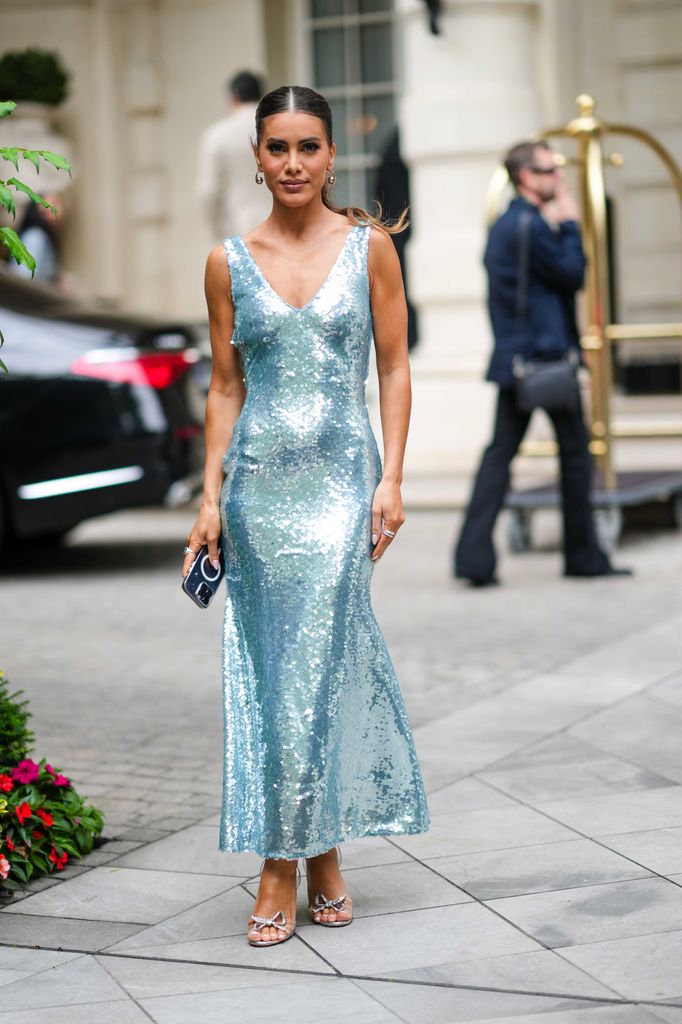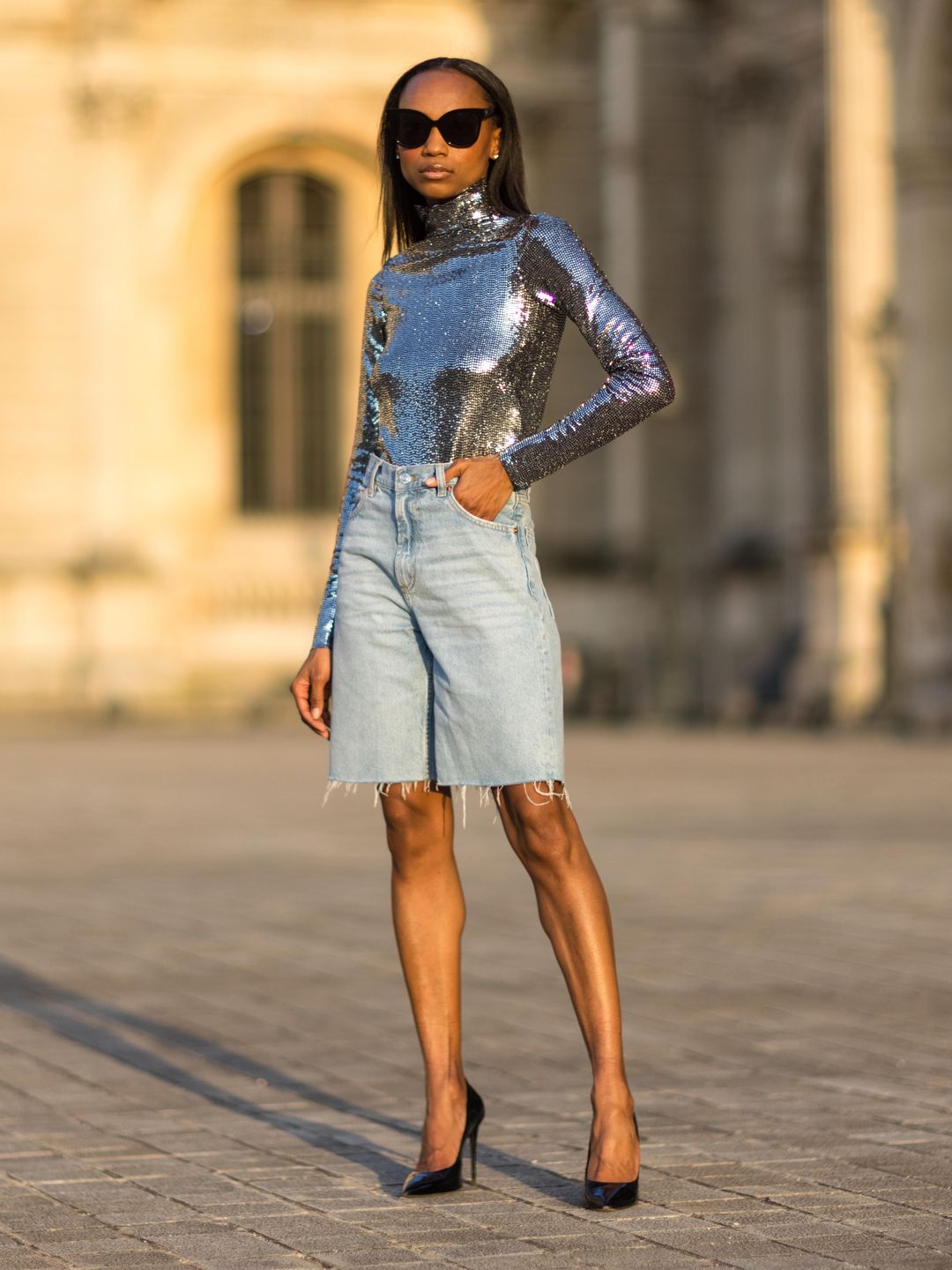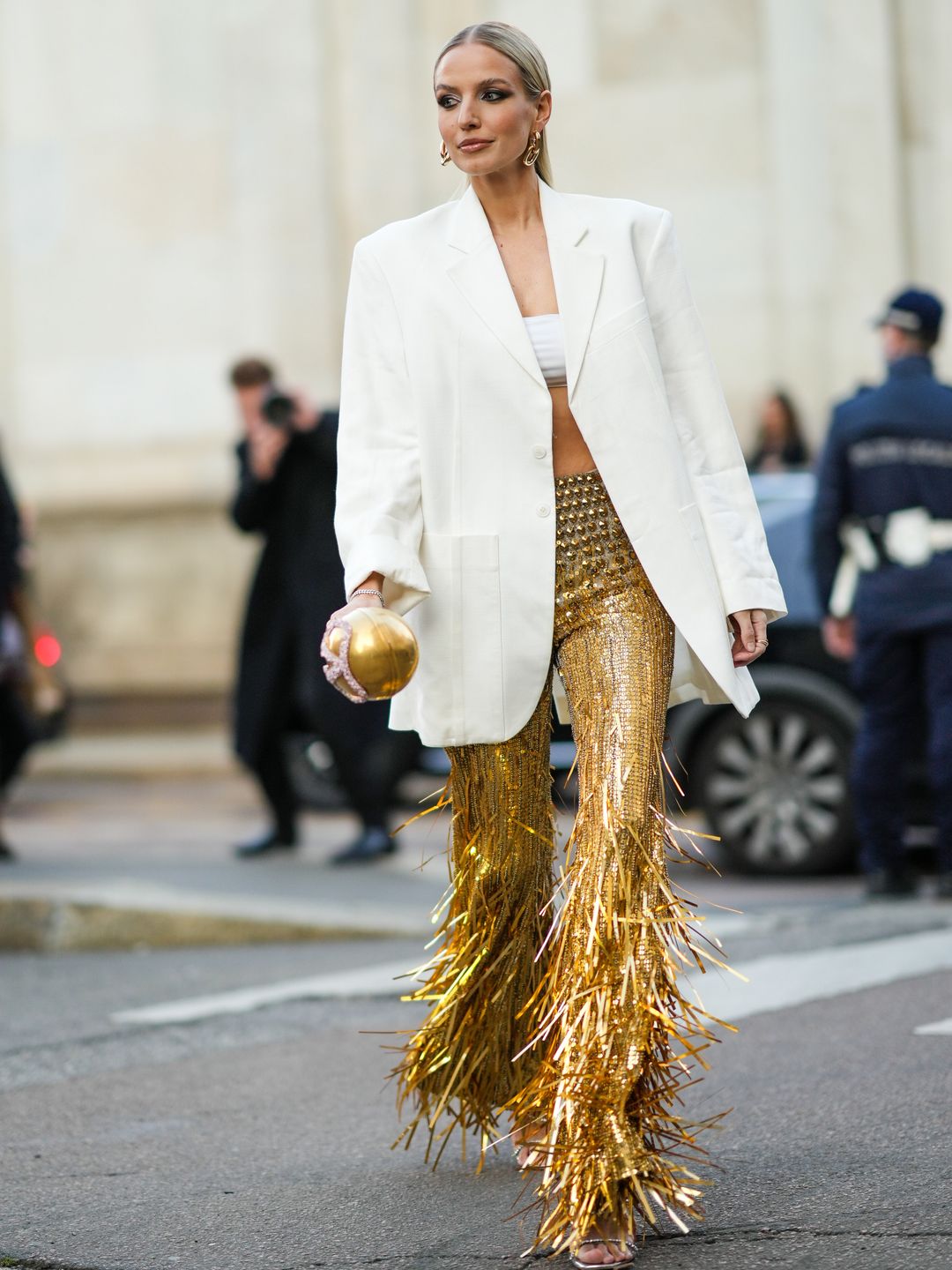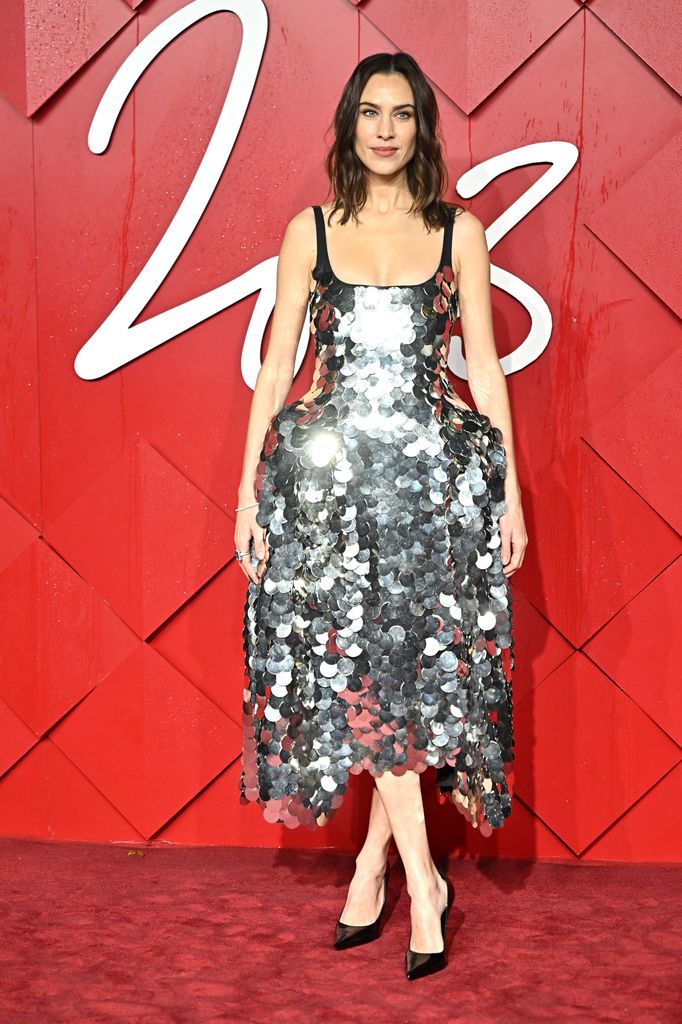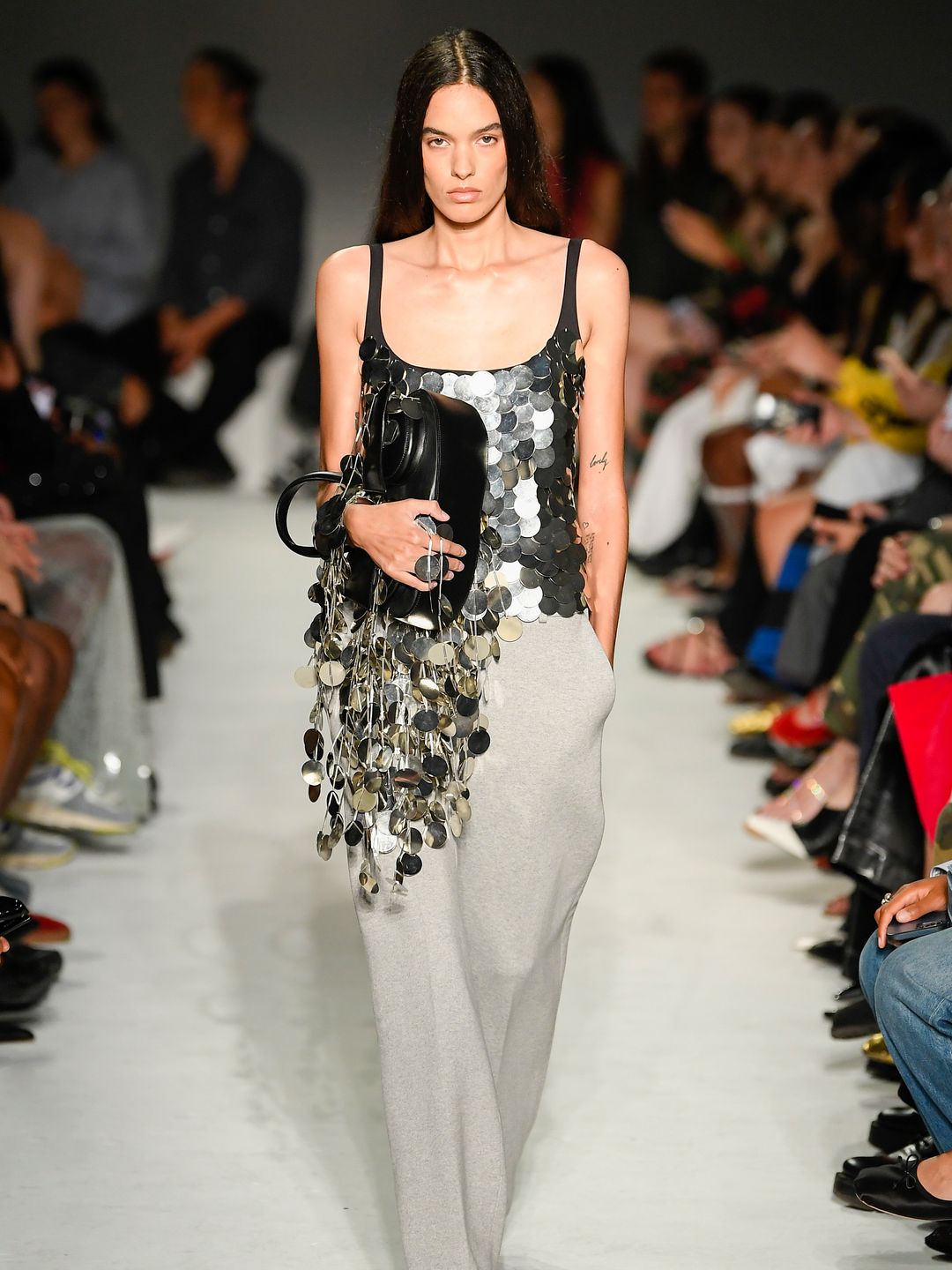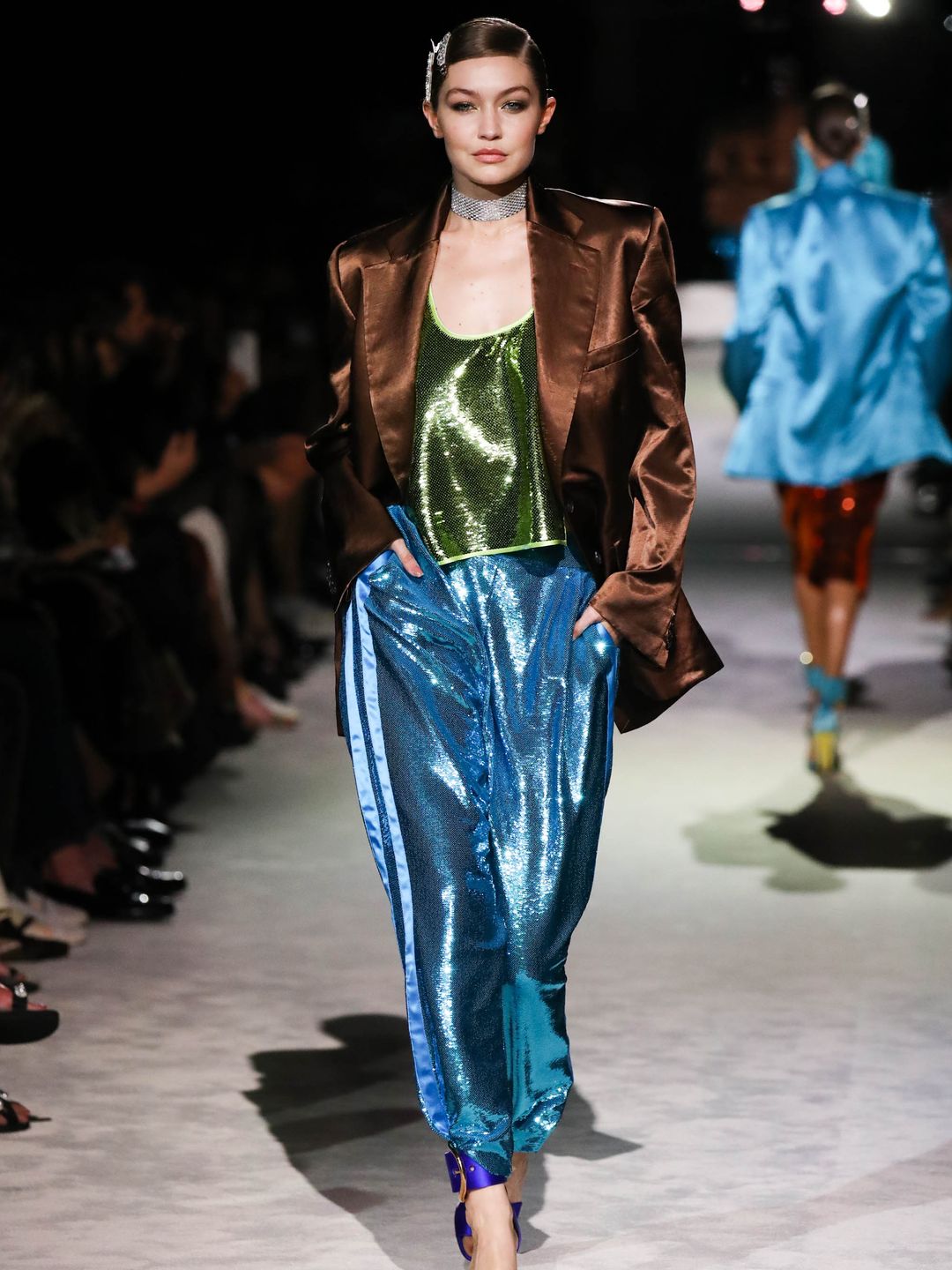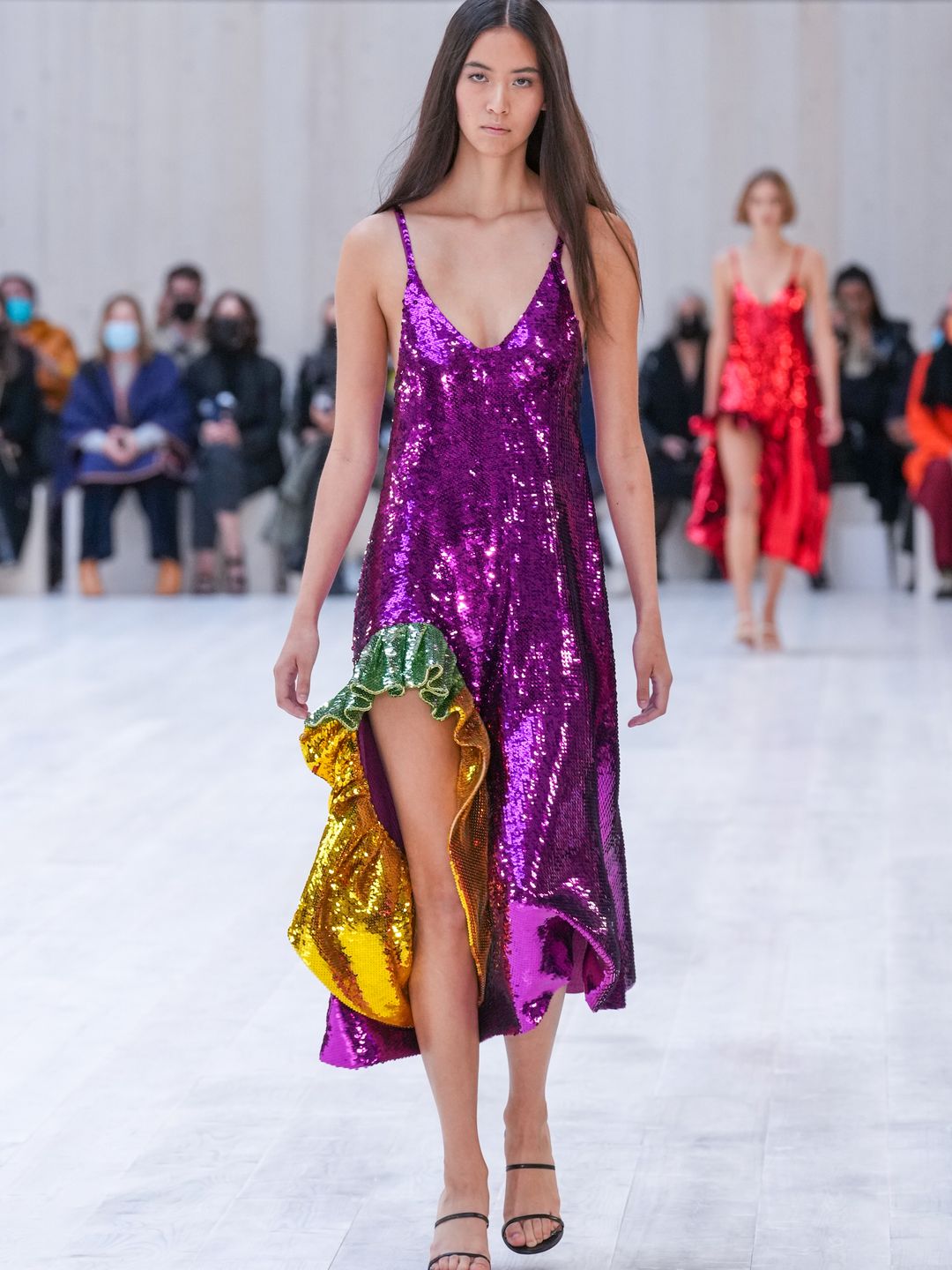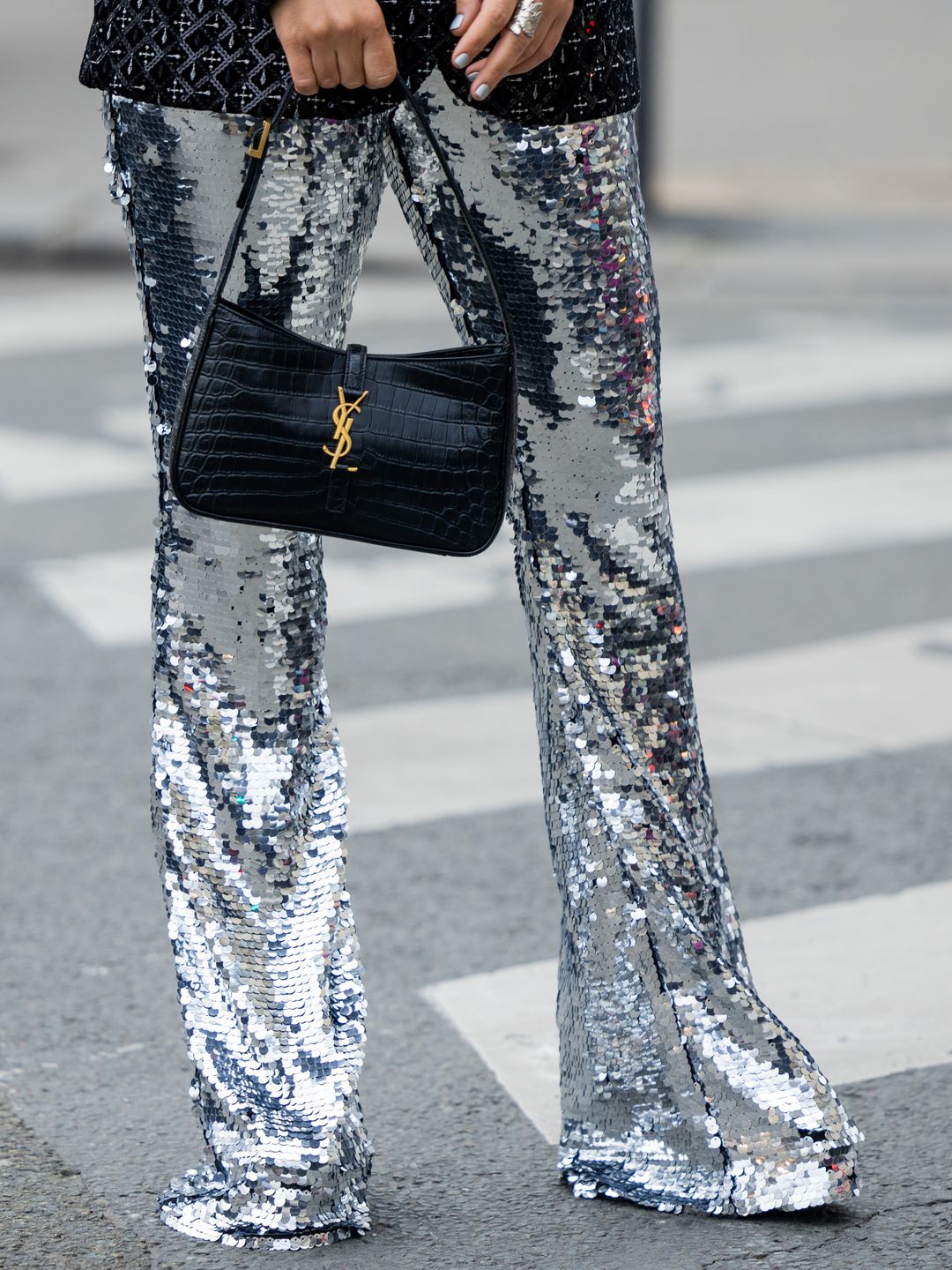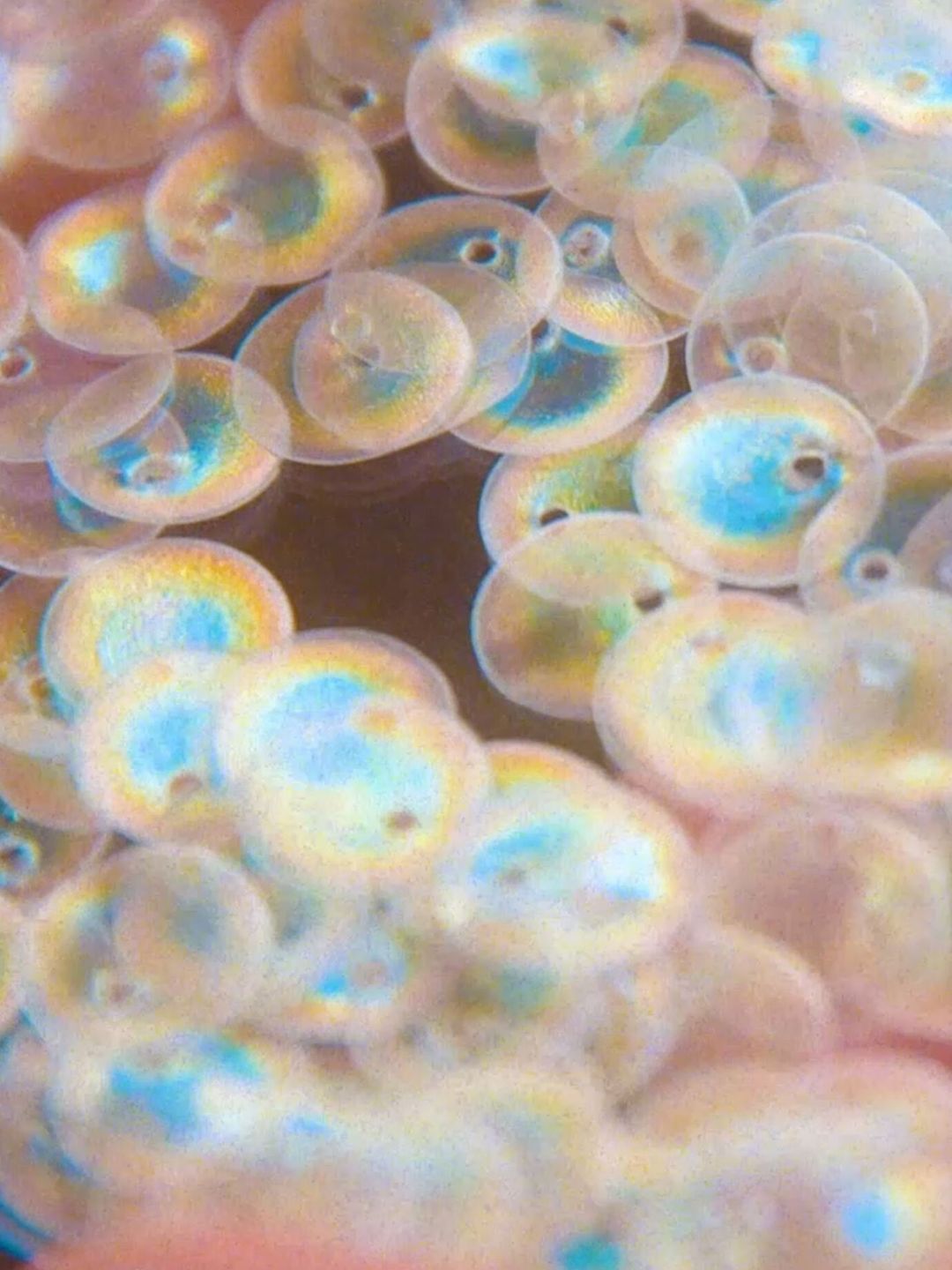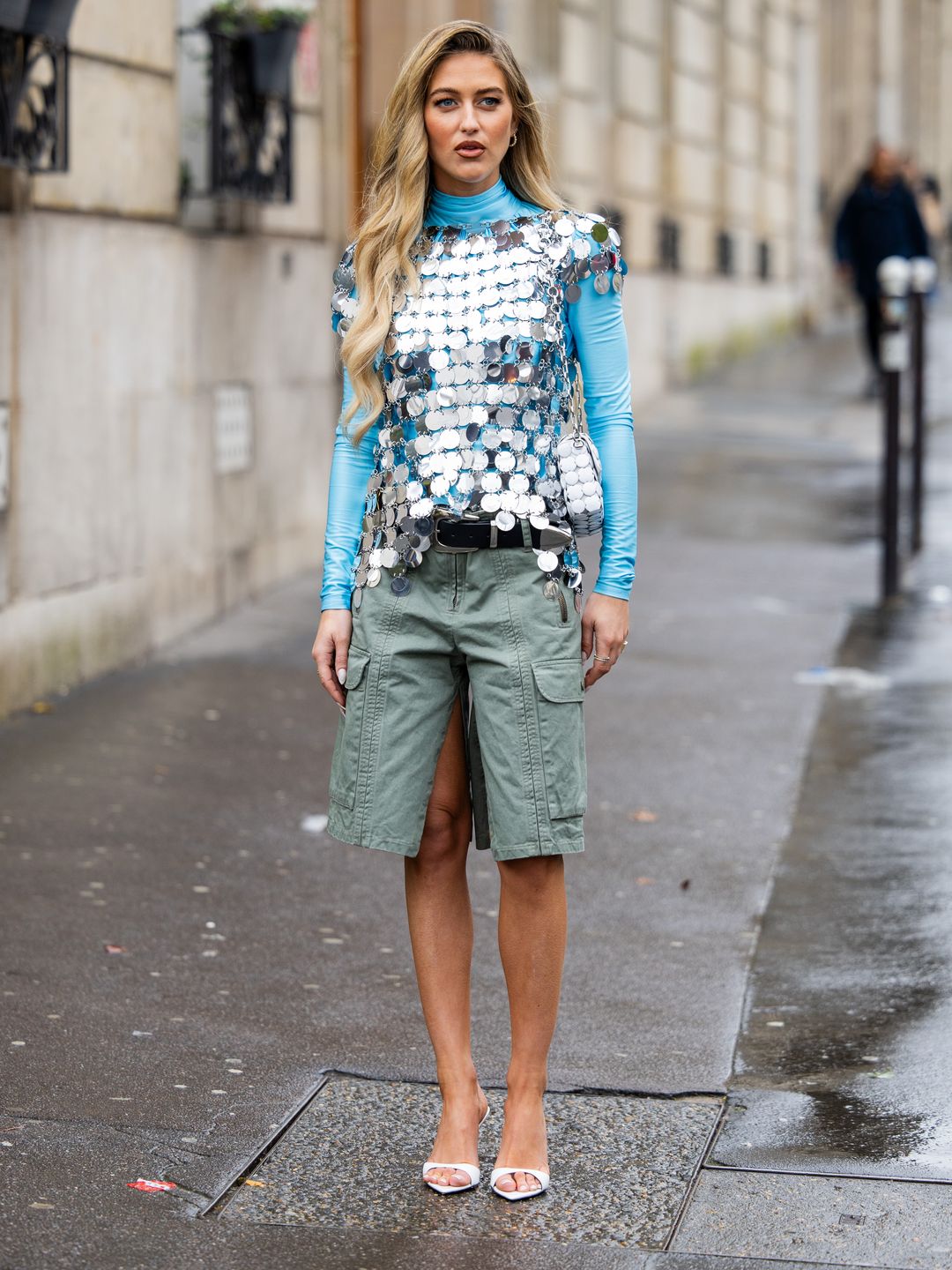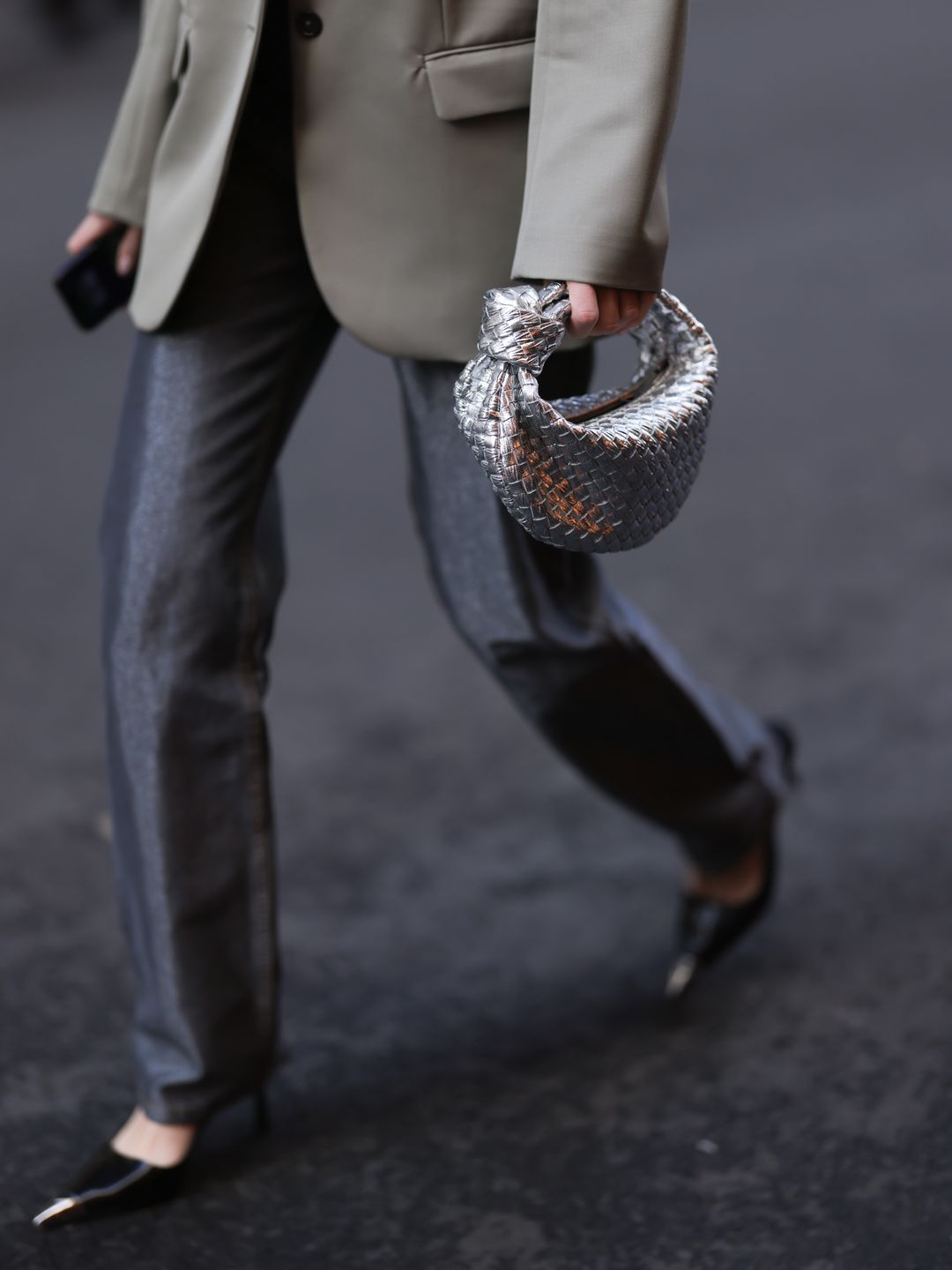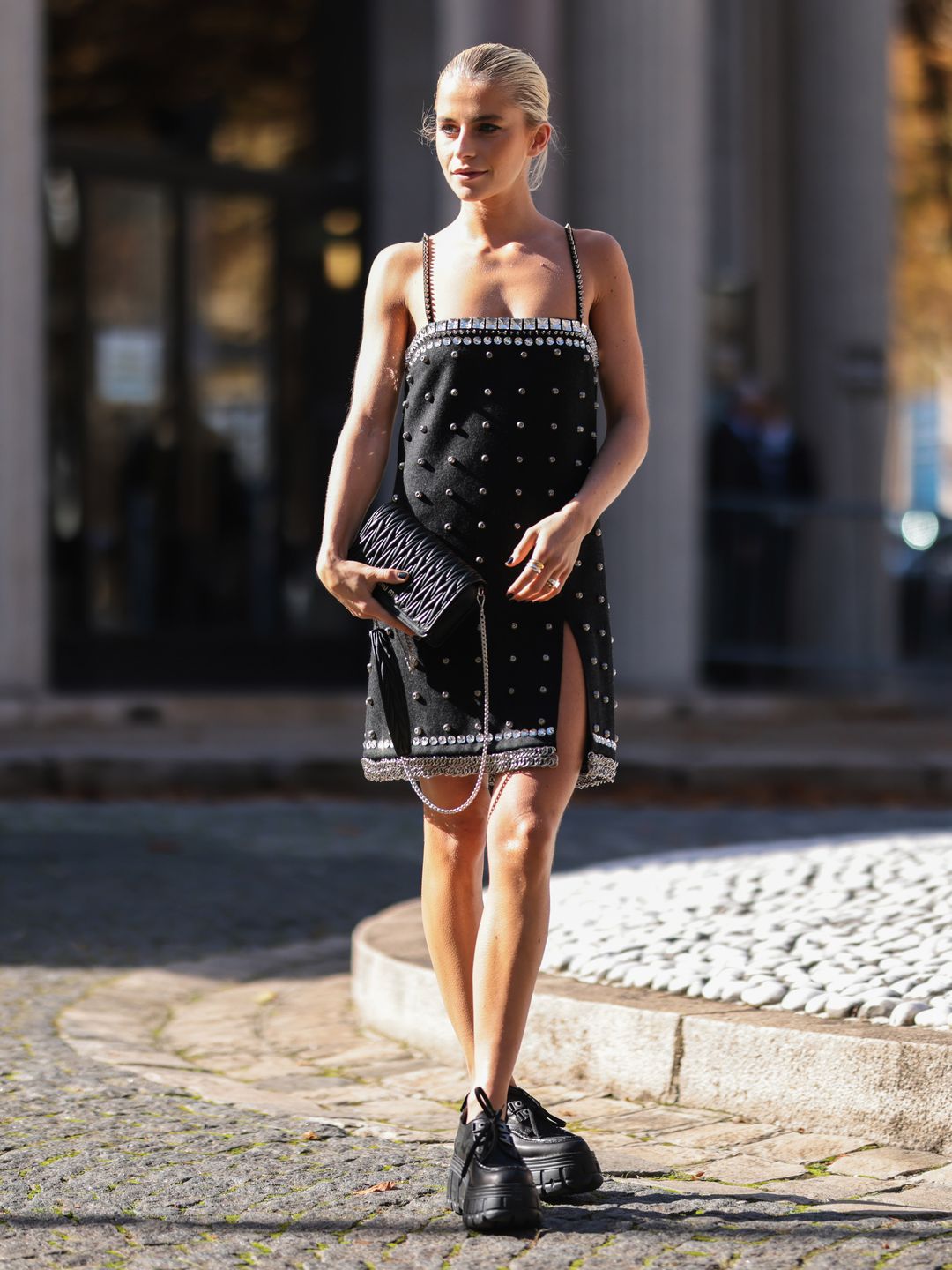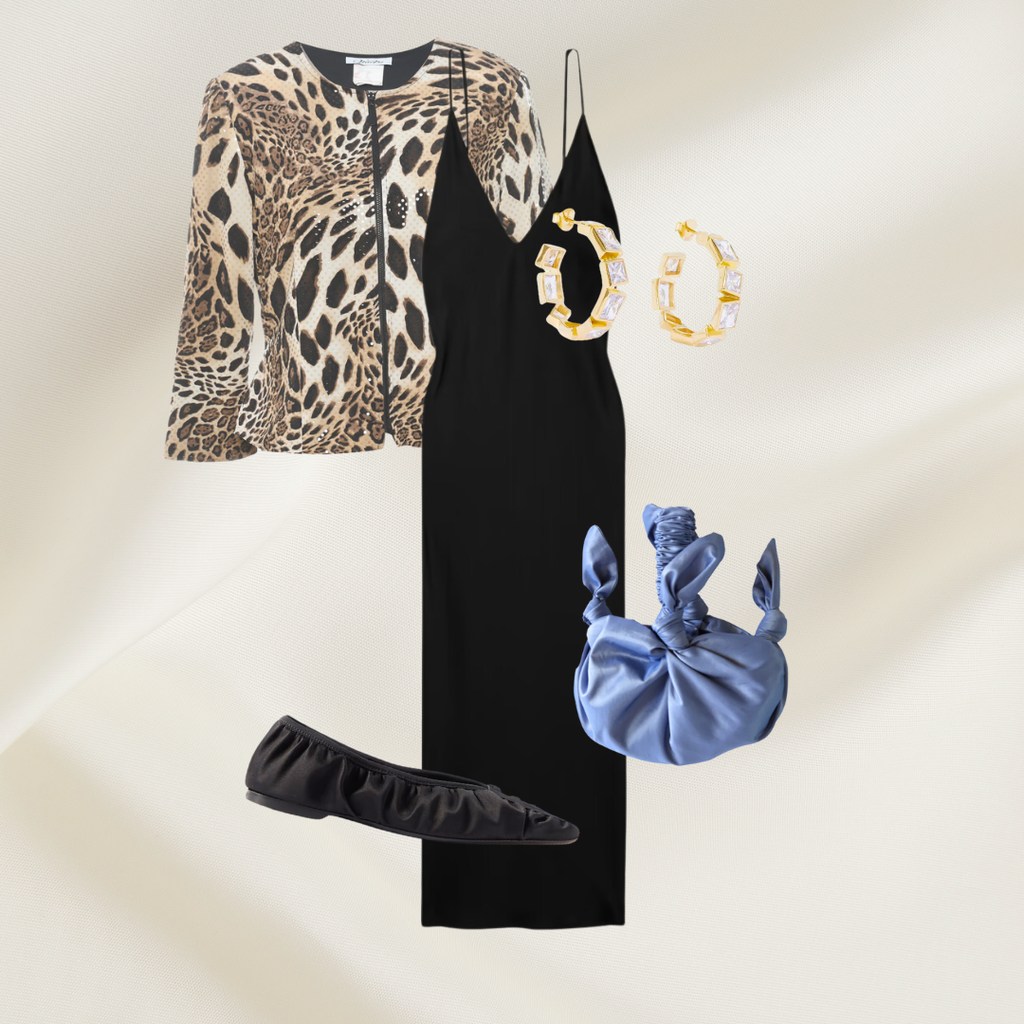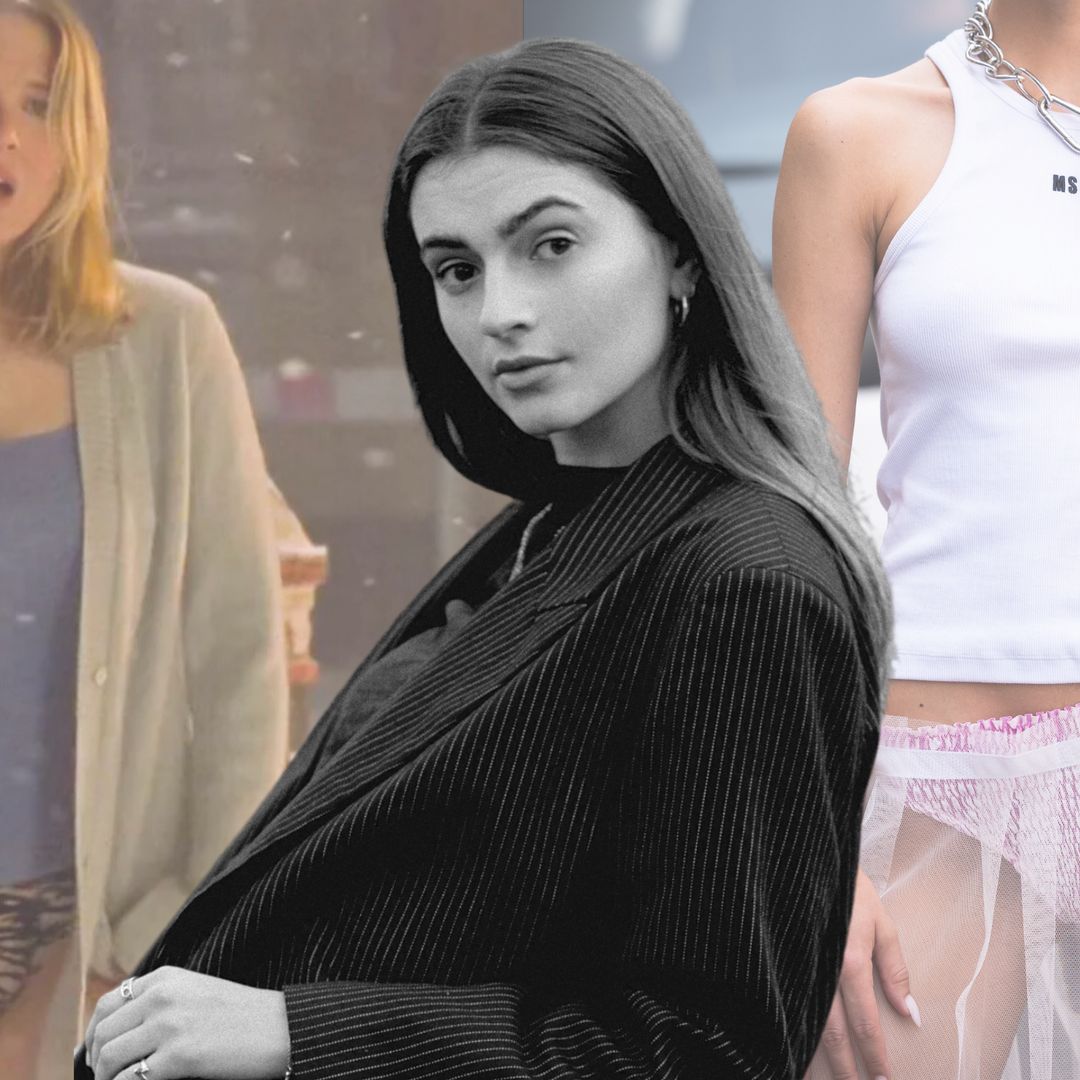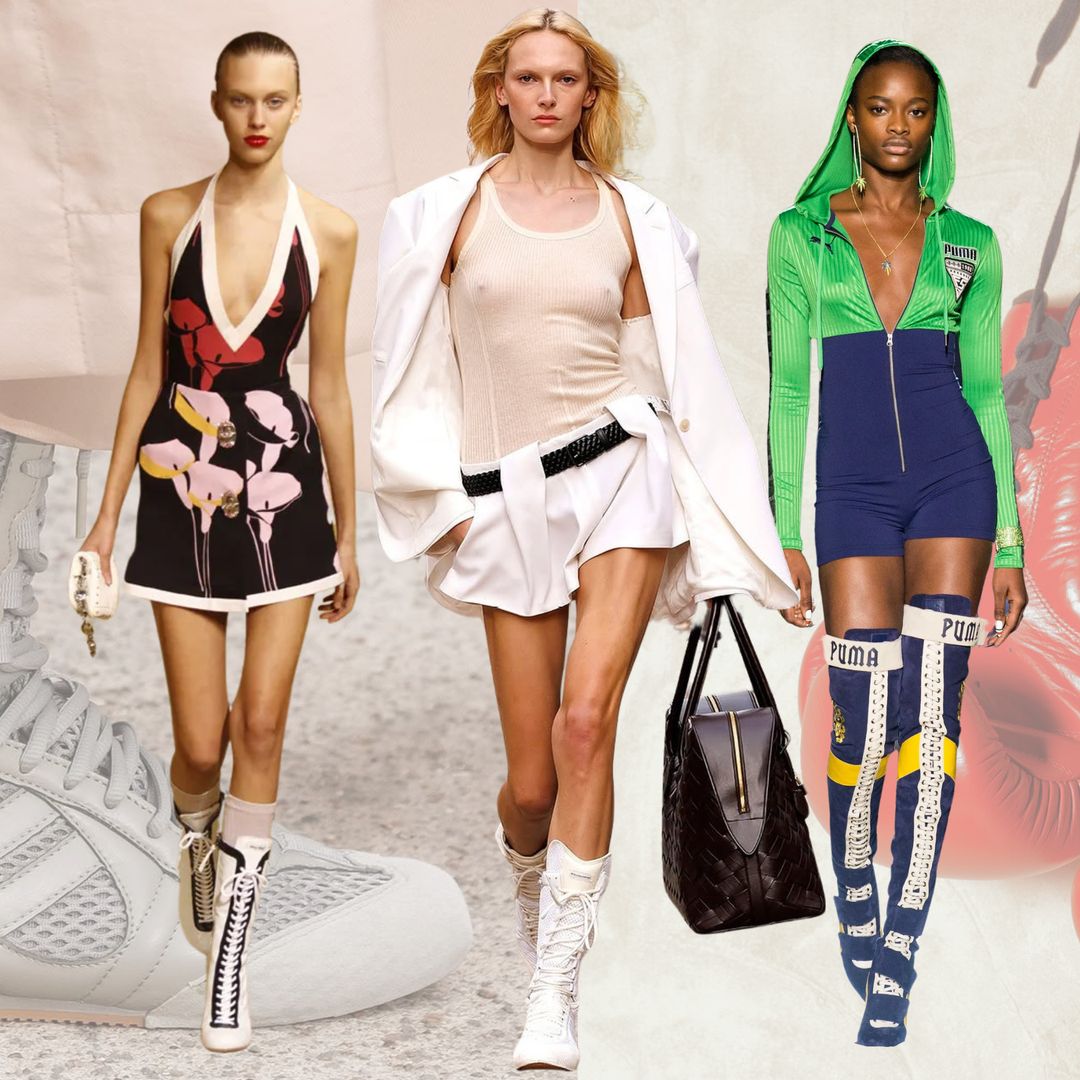Sequins are a flash of unapologetic joy, the loud friend who always brings the drama. Decadent, flirtatious and deliciously obnoxious, the shimmering micro discs are an optimistic statement worn extensively throughout the festive season. They are also one of fashion’s biggest villains.
The sartorial sinner that is the not-so-humble sequin is ubiquitous during winter. Christmas dress codes and New Year’s Eve have become synonymous with the material, which oozes confidence amidst a crowded room.
Sadly, the petite paillettes are a disaster for the environment. Yep, we’re talking about the dreaded, wholly overused word that is ‘sustainability.’
Fashion is all about joy, yet sometimes the parade needs to be rained on in order for consumers to reassess their shopping habits. Consider it a light shower of existential reality.
Sequins are made from non-biodegradable plastic, typically PVC, which sheds microplastics that harm marine life and pollute ecosystems. The manufacturing process is resource-intensive, emitting toxins and chemicals into the environment. Additionally, sequins are rarely recycled due to their complex material composition, leading to significant waste as discarded garments often end up in landfills, making the dazzling discus composition one of the least sustainable festive trends.
Trust me, I’m just as devastated about this as you are. Not a day goes by when 16Arlington’s ‘Ray’ sequinned dress doesn’t cross my mind. Or Missoni’s sequin-peppered chevron knit maxis. Not to mention Erdem’s resplendent caped gowns. All glimmering so brightly they have sufficiently burned themselves into my brain.
Back in 2023, Alexa Chung attended the Fashion Awards in Marco Capaldi’s greatest creation to date. A sculptural dress that cut off at shins, featuring a scooped neckline and an exaggerated 17th century pannier structure - totally clad in large, silver sequins. It was arguably the writer’s best fashion moment to date - with those who practise sustainability feeling split between respecting the brilliance of the look and questioning the environmental implications behind it.
Many other designers incorporate sequins in their collections, making a sparkling statement in fashion. Tom Ford, for instance, often uses sequins in glamorous evening wear, adding a modern edge to classic silhouettes. Michael Halpern, known for his disco-inspired style, heavily relies on sequins to create dazzling, maximalist designs. Ashish Gupta, of the label Ashish, is celebrated for his vibrant sequin work, crafting pieces that feel like wearable art. Valentino and Dolce & Gabbana also embrace sequins, especially in couture collections.
Heck, if Rabanne offered me a dress my morals would probably go out the window too (full disclosure.) Yet, what worries me is the vast amount of people going out of their way to buy sequins, without knowing what that single add-to-bag moment costs the planet.
I’ll break it down for you. Oxfam estimates that more than 1.5 million sequinned items will be discarded in Britain after Christmas alone. The charity also surveyed 2,000 British women aged 18 to 55 in 2019, 40 per cent of whom said they would buy a sequinned piece of clothing for the festive season - with only a quarter saying they’d wear it again.
Given that according to RTS there is an estimated 75 to 199 million tonnes of plastic waste currently in our oceans, with a further 33 billion pounds of plastic entering the marine environment every single year - the need for sequins is a highly unnecessary one.
The stats are endless, and clearly speak for themselves. Yet, there are some brands making a difference. Back in 2021, Boden banned the use of sequins in their collection. Sustainability pioneer Stella McCartney is championing the use of biodegradable, low-carbon and non-toxic sequins, engineered by Radiant Matter.
The designer’s Biosequin jumpsuit creation, the first in the world, was debuted in 2023, in a campaign lensed by Annie Leibovitz and modelled by Cara Delevingne. Each Biosequin was crafted from plant-derived cellulose, offering sustainability without sacrificing iridescent opulence.
One can appreciate that not everyone can afford such a luxurious, forward-thinking piece, yet, there are ways around this.
If you simply can’t stay away from gloriously gleaming, petroleum-capped, turtle-choking sparkle, then we’d always recommend shopping second-hand. While it keeps the pieces in circulation without directly solving the problem, pre-loved sequins are ethically sourced at least, although not ethical by nature.
So, before party season commences, have a look at some alternatives. Vintage velvet, 100 per cent silk and your housemate’s borrowed slip dress will command the same amount of confidence as a swathe of sequins - no fashion-induced guilt necessary and no panic at this disco.
Save a whale. Shelve the sequins.
How to wear sparkle minus the sequins:
What to wear instead of sequins this festive season:
- DRESS: Leset Barb Maxi Dress, £460, NET-A-PORTER
- JACKET: Preloved 1990s Sparkly Leopard Print Evening Jacket, £30, BEYOND RETRO
- EARRINGS: Completedworks + NET SUSTAIN Recycled Gold Vermeil Hoop Earrings, £295, NET-A-PORTER
- BAG: Baby Furoshiki Bag, £52, ROOP
- SHOES: Toteme The Gathered Satin Ballet Flats, £420, NET-A-PORTER
HELLO!'s selection is editorial and independently chosen – we only feature items our editors love and approve of. HELLO! may collect a share of sales or other compensation from the links on this page. To find out more visit our FAQ page.


